Is Social Media Marketing Worth It? Let’s Break Down the Numbers
Social media marketing: Everyone’s doing it, and the promise of a massive, engaged audience for “free” is hard to resist.
But hold on a second.
Before you jump into the endless vortex of posting and follower chasing, consider this: recent studies show that organic social media delivers the lowest return on investment compared to other marketing channels.
Ouch. That can sting.
However, before you write off social media entirely, here’s the good news: social media marketing can be a powerful tool for driving engagement and brand awareness (which ultimately leads to authority, thought leadership, website traffic, and even conversions). The key is understanding its strengths and weaknesses and how to leverage it strategically.
The allure of social media for business is undeniable. Endless scrolling, instant gratification, and the promise of reaching millions — it’s a tempting cocktail. But is more always better?
For years, the mantra was “post more, engage more.” But the reality is, the social media landscape has evolved. Audiences are savvier, attention spans are shorter, and algorithms are smarter. Now, it’s about strategic, high-quality content that truly resonates.
Why Tracking Social Media Success Can Feel Like Counting Raindrops
Let’s be honest, proving the value of social media marketing to upper management can feel like trying to quantify the weight of a cloud.
While platforms promise massive reach, 52% of organizations struggle to measure their impact. Unlike traditional advertising with clear metrics, social media’s influence often feels intangible. A witty tweet might go viral, generating tons of engagement, but did it translate into dollars and cents?
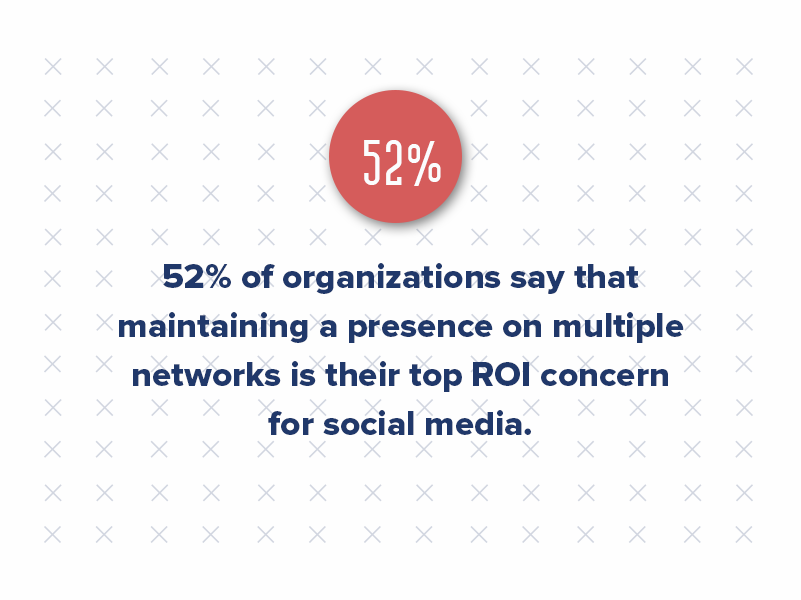
The tricky part is that social media marketing often lays the groundwork for later conversions in the marketing funnel. Someone might see your informative blog post about a common industry problem, “like” your page, and then months later, when they’re ready to tackle that problem, remember your company and visit your website for a solution.
It’s a subtle influence, not a direct conversion machine.
Why You Still Need Social Media Marketing (Even If It’s Hard to Track)
Despite the tracking challenges, social media marketing offers several invaluable benefits that contribute to your overall marketing strategy, even if they aren’t directly reflected in a sales report:
- Brand Awareness & Visibility: Social media platforms put your brand directly in front of a massive audience, keeping you top-of-mind and fostering brand recognition. It’s like having a constant, low-key billboard reminding people you exist.
- Building Relationships: Social media allows for two-way communication, the holy grail of marketing! Respond to comments, answer questions, and engage with your audience in real time. This builds trust and loyalty, turning fleeting followers into brand advocates.
- Market Research & Customer Insights: Social listening allows you to eavesdrop on the online world, seeing what people are saying about your brand, industry trends, and competitor activity. This invaluable intelligence can inform your marketing strategy and help you stay ahead of the curve.
- Community Building: Create a vibrant online community where customers can connect, share experiences, and feel a sense of belonging. This fosters brand loyalty and positive word-of-mouth marketing — essentially, free advertising from your happy customers!
Beyond the Likes
Despite the challenges in quantifying social media ROI, it still remains a critical component of any successful marketing strategy. Why?
Consider this: a staggering 94.6% of internet users between 16 and 64 years old visited a social network site in the last month. This massive audience represents a goldmine of potential customers.
While social media might not always yield direct sales figures, it’s where discovery happens. A full 44% of Gen Zers and 33% of millennials primarily gather product information through social channels. This means social media is often the first touchpoint for many consumers, influencing their purchasing decisions.
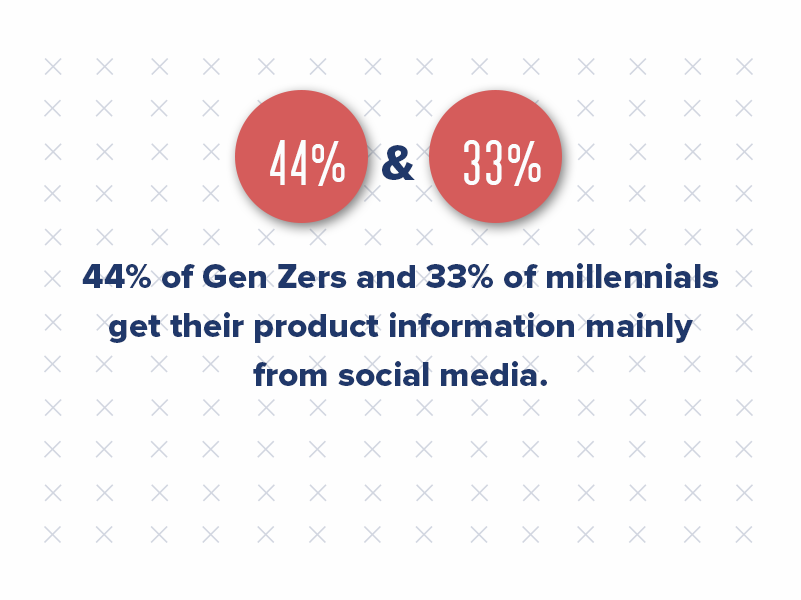
Additionally, 90% of marketers now recognize the importance of social search optimization, underscoring the platform’s role in the overall customer journey.
Prioritizing Quality Over Quantity
The era of shotgun social media marketing is over. Companies are realizing that spreading resources thin across multiple platforms isn’t always the most effective strategy. There’s a growing shift towards focusing on a few key channels where they can truly excel.
Platforms like Twitter have seen a decline in brand usage as companies prioritize social media ROI. The future lies in mastering a select group of platforms, delivering exceptional content, and measuring impact closely.
So how do we bridge the social media ROI gap?
- Set SMART Goals: Don’t just aim for “more followers.” Define Specific, Measurable, Achievable, Relevant, and Time-bound goals that align with your overall marketing objectives. Focus on metrics like website traffic, lead generation, or brand sentiment. These will be your guiding lights to measure success.
- Targeted Content: Don’t be a social media spammer. Create high-quality, engaging content that resonates with your ideal customer. Tailor your content to the specific platform, understand what your audience wants, and provide them with valuable information or entertainment. Social is best for building brand equity, which takes time. Don’t revert to your old, self-promotion-y ways either. No one likes a hard sell, and letting them flock to you will be so much more effective in the long run.
- Paid Advertising: Consider strategically using paid social media advertising to reach a wider audience and target specific demographics with a laser focus. Paid ads can be a powerful tool to promote valuable content offers, webinars, or drive traffic to key landing pages.
- Track & Analyze: Metrics like website traffic, lead generation, and social media engagement paint a picture of your social media’s impact, even if you can’t directly attribute every sale to a specific tweet. Use analytics tools to understand what’s working and what’s not, and constantly refine your approach. Run experiments with new content types or tone of voice. Once you see results, start tweaking future posts and keep testing and iterating as you go.
- Be Consistent: Regular posting keeps your brand on mind and builds your content’s anticipation.
To truly capture attention, brands must shift their focus from quantity to quality. Social media should be an interactive space where value exchange is a two-way street. crafting content that informs, inspires, or simply brings a smile to faces, businesses can foster genuine connections with their audience. It’s not just about promoting products or services; it’s about offering value and becoming part of the conversation. Remember, social media is a two-way street. By listening to your audience and responding authentically, you can build trust and loyalty that translates into long-term business success.
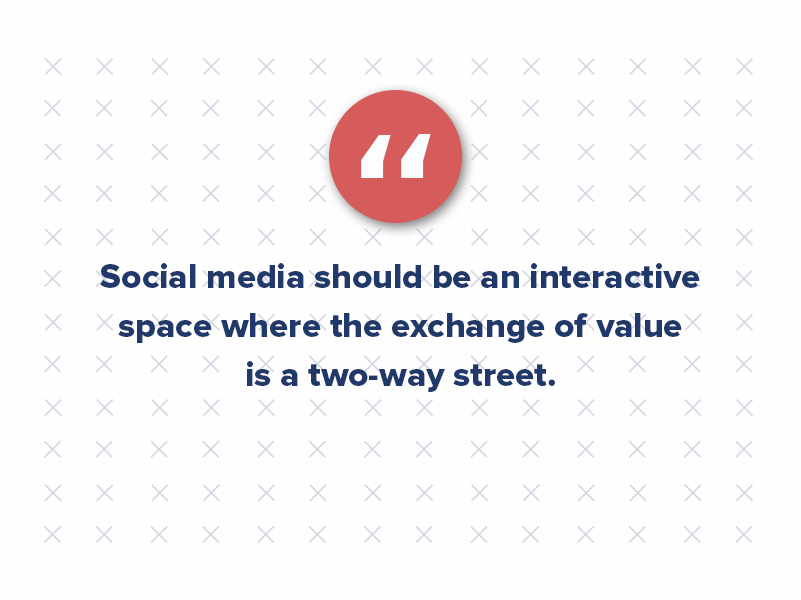
Making Social Media ROI Work for You
Social media success requires a strategic approach, not random posting. It’s like having a secret weapon in your marketing arsenal — one that fosters brand loyalty, fuels word-of-mouth marketing, and positions you as a thought leader in your industry.
Ready to unlock social media marketing’s true potential? Contact us today for a free consultation and learn how we can help you develop a winning social media strategy that aligns with your business goals.
Here Are the Missing Pieces in Your Multifamily Marketing Plan
Content marketing in the multifamily industry has long been an afterthought — nice to have but not essential. But as multifamily marketing trends shift, it’s clear that how we create content can no longer be an experiment or an afterthought. It’s the strategy.
Property management teams relied on static flyers, cookie-cutter ads, and generic website pages for years to engage with prospective renters. Today, that’s simply not enough.
Multifamily inbound marketing is about meeting renters where they are — searching, scrolling, and researching online. That means an effective multifamily content marketing strategy must be data-driven, omnichannel, and hyper-relevant to a specific multifamily buyer persona.
At Criterion.B, we’ve worked with multifamily properties nationwide to refine their marketing campaigns and adjust to modern renters’ expectations. And if there’s one takeaway from the last five years, it’s this:
If your multifamily brand identity isn’t aligned with the multifamily brand experience, you’re leaving leads (and leases) on the table.
What Residents Expect From Your Multifamily Content Marketing
Gone are the days when content was just a blog and a few Google Ads. Modern multifamily marketing goes beyond writing informative blog posts — it’s about crafting an experience that resonates with a target audience. It’s not enough to rank on Google; you need to convert the traffic once people land on your page.
Think about it: When potential residents search for “best apartments near downtown,” they don’t just want a list of properties. They want reviews, neighborhood insights, community engagement, and compelling content that reassures them they’re making the right choice. That’s why search engine optimization (SEO) alone isn’t enough. Multifamily SEO has to work in tandem with high-quality, engaging content that educates, informs, and builds trust.
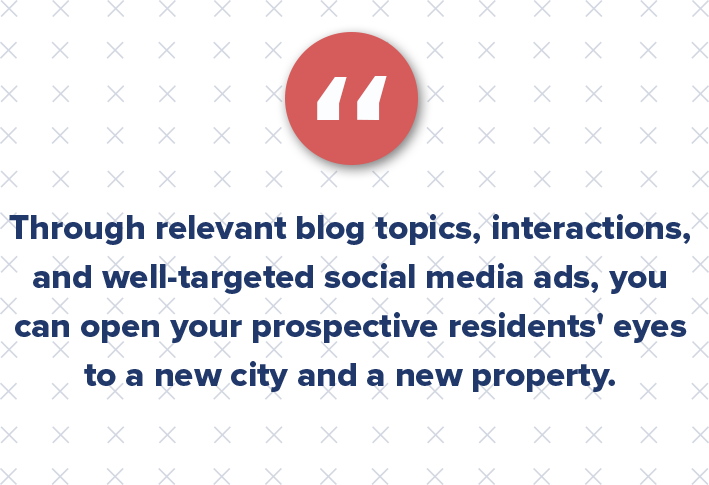
Why Is Content Marketing Still Undervalued?
The biggest misconception in multifamily inbound marketing is that content isn’t a revenue driver. Some property management teams still consider it an expense rather than a core lead generation strategy. But the reality is that content isn’t just about rankings — it’s about influence.
Content builds trust. A strong Google Business Profile with detailed posts, FAQs, and resident reviews boosts credibility. Informative videos and testimonials on a social media platform increase engagement.
A well-optimized SEO strategy ensures your property is found before competitors. And most importantly, content helps renters see themselves in your community — before they even visit.
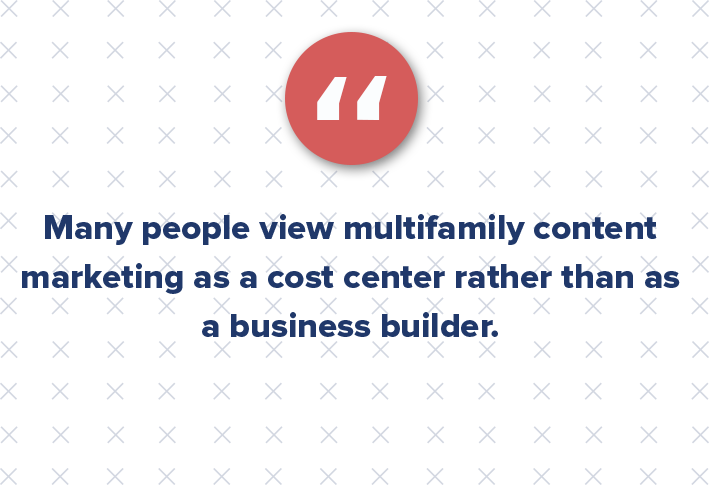
How to Build a Content Marketing Plan That Works
A successful content marketing strategy requires more than a few blog posts. Here’s what multifamily properties need to prioritize:
1. Know Your Audience, Build Your Persona
Your multifamily buyer persona determines everything: messaging, branding, social media marketing, and advertising strategy. Are you targeting young professionals, downsizing baby boomers, or remote workers? Your content must speak to their unique needs and expectations.
2. Leverage Multiple Channels
Your audience isn’t just on your website — they’re across multiple social media platforms, browsing on Google, and checking online reviews. Effective multifamily content marketing should be spread across organic search, email, video, and social media.
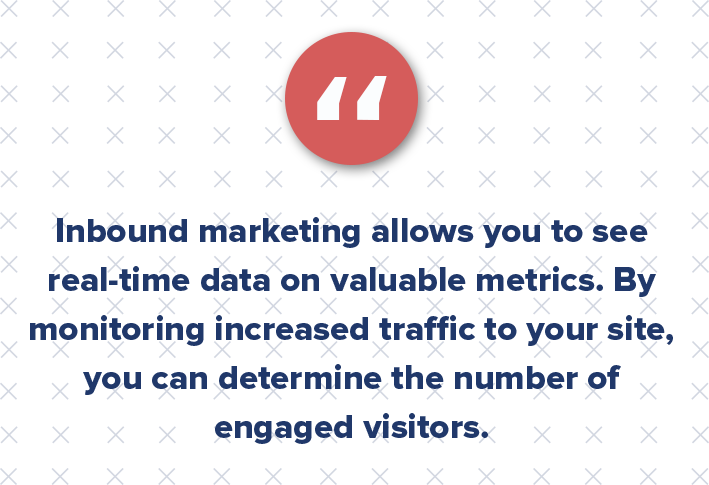
3. SEO + Content = Visibility
Writing great content is useless if no one sees it. Search engine optimization (SEO) is critical for long-term success. Whether optimizing for Google Business Profile, crafting data-driven blogs, or improving site structure, every piece of content should be working to increase organic traffic.
4. Prioritize Value, Not Just Promotions
Your marketing plan shouldn’t just push lease specials — it should position your property as a go-to resource. Think about content like:
- Apartment living tips
- Community guides
- Moving checklists
- Resident success stories
- Neighborhood spotlights
5. Social Media Is More Than Just Posting
Social media marketing for multifamily isn’t just about posting floorplans. It’s about storytelling. A smart multifamily branding agency will craft campaigns highlighting the multifamily brand experience, showcase resident testimonials, and engage with followers through interactive content.
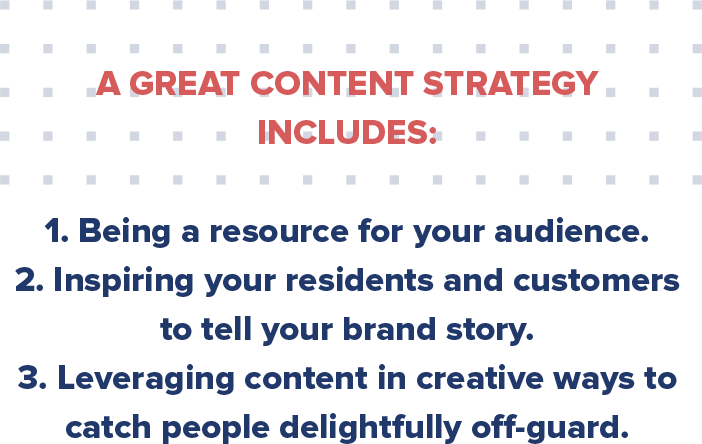
Essentially, you must create great content and then adapt it across platforms. For example, a single blog post can be shared on Twitter with a snappy headline, extended to Instagram with an engaging image, and adapted to a shareable infographic.
While social networks continue to grow more visual, multifamily marketing professionals will have the opportunity to be wildly creative in their cross-platform applications.
How Do You Justify the ROI of Multifamily Marketing?
If you’re approaching your content marketing strategy correctly, you can tie your efforts directly to ROI — both qualitative (brand-focused) and quantitative (business-focused).
Let’s take Zillow, for example. Its content strategy achieves highly targeted brand goals (i.e., establishing Zillow as a storyteller within real estate) and business goals (i.e., driving traffic to its website to increase conversions). It should work the same way for your multifamily property:
- What multifamily brand goals are you trying to achieve?
- What business goals are you trying to achieve?
No matter what your business is, your content marketing actions should be driven by the questions above. Only then can you develop a roadmap with a purpose and measurable objectives.

Are You Ready for the Future of Multifamily Marketing?
We’re at an inflection point. Inbound multifamily marketing is evolving, and renters expect more. They don’t just want listings; they want an experience. The brands that succeed will be the ones that invest in content — not as an afterthought, but as the foundation of their lead generation strategy.
If your multifamily marketing still feels stuck in the past, it’s time to rethink how you connect with potential residents. Content isn’t just king anymore — it’s the entire kingdom.

Expert Tips to Avoid Property Management Nightmares
The life of a property manager is a juggling act. You’re responsible for everything from resident relations and maintenance to budgeting and legal compliance. It’s no wonder that mistakes can happen, especially for new property managers or those managing a growing portfolio.
The good news is that by identifying common pitfalls, you can take proactive steps to avoid them.
Here’s a look at some of the biggest mistakes property managers make, along with actionable tips to keep your properties running smoothly:
1. Failing to Properly Screen Residents
A bad resident can be a nightmare for any property manager. They can damage the property, disrupt other residents, and drain your time and resources.
The fix? Implement a thorough screening process that includes credit checks, rental history verification, employment verification, and reference checks. Don’t skip this crucial step — a bad resident can cost you far more in the long run than a thorough screening process ever will.

2. Not Having Clear Lease Agreements
A well-written lease agreement protects both you and your residents. It should clearly outline the rights and responsibilities of both parties, including rent amount, due dates, late fees, pet policies, maintenance procedures, and termination clauses.
The fix? Use a standardized lease agreement that has been reviewed by a lawyer. Keep it updated with any local or state regulations that may change.
3. Letting Maintenance Requests Pile Up
Prompt and thorough maintenance is a cornerstone of successful property management. Like addressing resident complaints quickly, addressing maintenance requests swiftly is essential to avoid a cascade of negative consequences.
Here’s why prioritizing maintenance is crucial:
- Protecting Your Investment: Regular maintenance plays a vital role in preserving the condition of your properties. Neglecting repairs can lead to further deterioration, decreased property value, and higher operating costs. Think leaky faucets that escalate to water damage or clogged gutters that lead to foundation issues. Addressing minor issues promptly saves you money in the long run.
- Resident Satisfaction & Safety: Living in a well-maintained property contributes significantly to resident satisfaction. Ignoring maintenance requests creates frustration and a sense of neglect. Prioritizing repairs ensures a safe and comfortable living environment for your residents.
- Reduced Liability: Letting maintenance issues linger can expose you to legal trouble. For instance, a slip and fall because of an unaddressed ice patch on the sidewalk could result in a lawsuit. By promptly addressing maintenance requests, you’re mitigating potential liability risks.
Here’s how to ensure your properties are well-maintained:
- Routine Inspections: Schedule regular inspections of your properties to identify potential problems before they become major issues. This could involve monthly walkthroughs or annual comprehensive inspections.
- Qualified Contractors: Develop relationships with qualified and reliable contractors who can handle various maintenance tasks. Verify references to confirm licensure and insurance. Oversee the quality and timeliness of their work to ensure efficient repairs.
- Budgeting for Maintenance: Don’t underestimate the importance of budgeting for maintenance and repairs. Factor in routine maintenance costs and a reserve fund for unexpected emergencies and major repairs. This ensures you have the resources readily available when needed.
- Communication Is Key: Like with resident complaints, keep residents informed throughout the maintenance process. Acknowledge their request promptly, explain the repair timeline, and provide updates if any delays occur. Open communication fosters trust and reduces frustration.
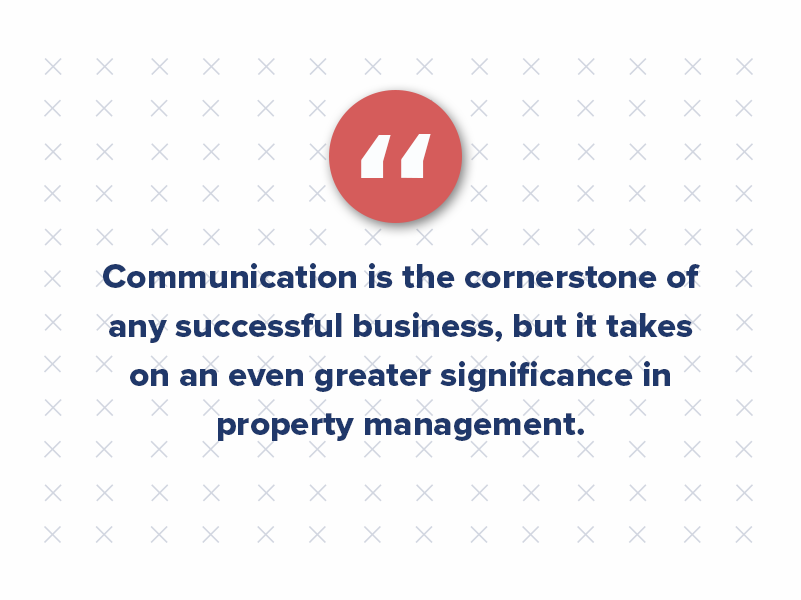
4. Poor Communication With Residents
Communication is the cornerstone of any successful business, but it takes on an even greater significance in property management. You’re constantly juggling interactions with a diverse group — your team members, property owners, residents, and vendors. When communication breaks down, it can lead to misunderstandings, conflicts, delays, errors, and ultimately, dissatisfied customers.
Here’s how to ensure smooth communication:
- Establish Clear Channels: Don’t leave your team and renters guessing how to reach you. Set up designated communication channels — email, phone calls, text messages, or online platforms like resident portals. Consistency is key — don’t make them chase you down across multiple platforms.
- Frequency & Transparency: Aim for frequent, transparent communication. Regular updates keep everyone informed and in the loop. Don’t be afraid to share both good and bad news promptly and honestly.
- Tailored Communication: A one-size-fits-all approach won’t work. Tailor your communication style to your audience. Use clear and concise language with residents, provide detailed reports to property owners, and foster open collaboration with your team.
- Feedback & Listening: Communication is a two-way street. Listen to your team and renters’ concerns, questions, and suggestions. Provide positive and constructive feedback to keep everyone motivated and on track. Respond promptly and professionally, demonstrating that their input is valued.
- Technology Advantage: Fortunately, technology is on your side. Utilizing property management software streamlines communication by centralizing information, automating tasks, and facilitating easy access for all parties involved. This reduces the risk of errors and keeps everyone on the same page, boosting overall efficiency.
- Building Relationships: Effective communication goes beyond simply sharing information. It’s about fostering trust and building strong relationships. Schedule regular team meetings to discuss projects, address concerns, and celebrate successes. Open communication fosters a collaborative environment where everyone feels comfortable contributing their best work.
5. Not Keeping Records and Documents
Failing to organize and store important documents properly can lead to a domino effect of problems, including missing records. Missing or disorganized records can make tracking important information (i.e., lease agreements, maintenance requests, and financial transactions) difficult. This can lead to confusion, errors, and wasted time.
Without clear documentation, disputes with residents over rent payments, security deposits, or repairs can become tangled. Without proper records, you may be unable to defend your position in a legal dispute, potentially resulting in hefty fines or even lawsuits.
Here’s how to ensure your records are organized, secure, and accessible:
- Secure Storage: Utilize a secure and accessible system for storing your records. Cloud-based storage solutions offer convenience and accessibility, while traditional filing cabinets can work for paper documents.
- Regular Review and Updates: Don’t let your records become an archive of forgotten paperwork. Schedule regular reviews to ensure all documents are accurate and up-to-date.
- Compliance With Regulations: Retention laws vary depending on your location. Familiarize yourself with the relevant regulations regarding record keeping and disposal. Understanding these requirements ensures you’re adhering to legal mandates.

Effective record-keeping is a fundamental skill in property management. Most real estate transactions involve a mountain of paperwork — lease agreements, maintenance records, financial statements, and more.
Maintaining electronic copies alongside physical documents is essential in today’s digital age. This allows you to access crucial information even when you’re away from the office, ensuring you can always stay on top of your business.
6. Not Taking Advantage of Technology
Many property management software solutions can streamline your workflow and save you time. These tools can help you with tasks like screening residents, collecting rent online, managing maintenance requests, and generating reports. The fix? Research property management software options and find one that fits your needs and budget. Many offer free trials, so you can test them before committing.
7. Not Marketing Your Properties Effectively
Vacancies cost money. There’s no sugarcoating it. A well-defined multifamily marketing strategy is essential to attract qualified residents and keep your properties occupied.

Don’t put all your eggs in one basket. Utilize a diverse range of multifamily marketing channels to reach your target audience. This could include:
- Online Listings: High-quality listings on popular rental platforms are a must-have. If possible, showcase your properties with professional photos, detailed descriptions, and virtual tours.
- Social Media Marketing: Use social media to connect with potential residents. Share engaging social media posts, run targeted ads, and create a community around your properties.
- Website Presence: A professional website is a valuable asset. It lets you showcase your properties, provide leasing information, and establish your brand identity.
- Offline Strategies: Don’t underestimate the power of traditional methods. Yard signs, local print ads, and partnerships with businesses in your area can still be effective ways to reach potential renters.
While a do-it-yourself approach is possible, managing a comprehensive marketing strategy can be time-consuming, especially as your portfolio grows. This is where partnering with a marketing agency can be a game-changer.
Think of a marketing agency as an extension of your multifamily property team. They can provide a wealth of expertise and resources to help you achieve your marketing goals and increase your bottom line.
Here are just a few of the ways a marketing agency can streamline your marketing efforts:
- Streamlined Marketing Collateral: Ordering eye-catching flyers, brochures, and other marketing materials can be a hassle. Criterion.B offers a one-stop shop for designing and ordering all your promotional needs to save time and ensure brand consistency.
- Actionable Analytics & Reporting: A good marketing agency will leverage analytics tools to track the performance of your marketing campaigns. This data can reveal valuable insights into what’s working and what’s not. They can help you set up and track key metrics like website traffic, lead generation, and conversion rates.
- Search Engine Optimization (SEO): Improving your website’s ranking in search results so potential residents can easily find your listings.
- Email Marketing: Creating targeted email campaigns to nurture leads and connect with potential renters.
- Blogging and Content Creation: Developing engaging content that showcases your properties and attracts qualified leads via a blog post.
- Social Media Management: Creating engaging content and managing interactions with potential residents across all social media channels.
- Branding and Design: Developing a strong brand identity for your property management company, including logo design and website creation.
- Website Development and Management: Building a user-friendly website that showcases your properties and provides a seamless leasing experience.
8. Not Staying Up-to-Date on Industry Trends
The property management industry constantly evolves, with new technologies and regulations emerging. Staying informed is important to ensure your business runs as efficiently and effectively as possible.
The fix? Attend industry conferences, webinars, and workshops. Read industry publications and blogs to stay up-to-date on the latest trends.
Want quick marketing tips and multifamily trends delivered straight to your inbox once a week? Sign up for our weekly email list to stay informed!

9. Ignoring Complaints & Not Focusing on Resident Retention
High resident turnover can be a major drain on your resources. It involves advertising costs of vacant units, showing apartments, screening new renters, and processing paperwork. It can also result in a loss of rental income during vacancy periods. But the hidden costs are even greater — negative reviews, a damaged reputation, and a revolving door of unhappy residents.

Here’s how to cultivate a thriving community that keeps renters happy:
- Treat Renters with Respect: Building positive relationships starts with respect, courtesy, and professionalism. Respond to their needs and concerns promptly and effectively.
- Responsive Complaint Resolution: A well-defined system for handling complaints is essential. This includes a clear process for receiving, recording, and resolving issues. Respond quickly to complaints to explain how you’ll address the problem. Keep residents updated throughout the process, and follow up after the repair.
- Value Feedback and Communication: Open and transparent communication is key. Encourage feedback. Regularly solicit their input through surveys, resident meetings, or suggestion boxes. Actively listen to their concerns and suggestions, demonstrating their input is valued.
- Offer Incentives for Renewals: Show your existing renters how much you appreciate them by offering incentives for lease renewals. This could include discounts on rent, free parking, or waived application fees.
- Create a Sense of Community: Help your residents feel like they belong! Organize fun events, create social media groups for them to connect, or offer amenities that encourage interaction. When residents feel like part of a community, not just renters in a building, they’re more likely to want to renew their leases.
10. Micromanaging Your Team & Not Delegating Tasks
Learning the art of delegation becomes increasingly important as your property management portfolio expands. While you may be tempted to hold onto the reins and meticulously manage every detail yourself, this approach is ultimately unsustainable and can hinder your long-term success.
Micromanaging your team can have several negative consequences. It can stifle their motivation, creativity, and sense of autonomy. Constantly hovering over their shoulders can make them feel like they’re not trusted to do their jobs effectively, decreasing morale and productivity.
The solution lies in empowering your team through effective delegation.
- Delegate Based on Strengths: Analyze your team members’ skills, experience, and interests. Assign tasks that align with their strengths and allow them to develop new skills.
- Trust and Autonomy: Once you’ve delegated a task, trust your team to complete it without your constant oversight. Micromanaging every step is a recipe for frustration and resentment.
- Support and Resources: Provide your team with the necessary resources for success, such as training materials, software tools, and clear guidelines.
- Coaching for Growth: Don’t hesitate to offer guidance and support as needed. Regular check-ins and constructive feedback can help your team members grow in their roles.

Often, managers who micromanage their teams worry their employees aren’t doing a good job. If you don’t communicate well with your team or can’t motivate them, they might not feel like doing their best work. Instead of hovering over them, invest in becoming a better leader. Learn how to communicate clearly and build a team environment where everyone feels trusted and responsible for their work.
Remember, you hired your team for a reason — you believe in their skills and potential. Start by delegating smaller projects that allow them to demonstrate their capabilities. As they gain confidence and experience, gradually increase their scope of responsibility. If they hit a roadblock, provide coaching and support to help them develop the skills they need to reach the next level.

Achieve Smart Marketing With a Commercial Real Estate Agency
Imagine this: your meticulously designed office space sits vacant, a pristine canvas gathering dust. Or maybe your trendy apartment community struggles to attract qualified residents despite boasting top-notch amenities.
Simply having a fantastic commercial property isn’t enough. You need a strategic multifamily marketing plan that cuts through the noise and positions your offering as the ideal solution for your target audience.
This is where a commercial real estate marketing agency steps in, acting as your compass and confidant.

We’re talking about more than just slapping a “for lease” sign on the door. A good agency, like Criterion.B, can become your one-stop shop for commercial real estate marketing, encompassing both multifamily and non-residential properties.
Whether you’re a seasoned property owner or a newcomer to the market, navigating the complexities of digital multifamily marketing, crafting a compelling campaign, or establishing a distinct multifamily brand can feel overwhelming. This is where a multifamily marketing agency, like our team at Criterion.B, can be your secret weapon. We specialize in crafting unique brand narratives and developing data-driven strategies that resonate with your target audience.
The Evolving Landscape of Commercial Real Estate Marketing
You can no longer rely solely on traditional methods like print ads and cold calls. Today’s residents and tenants are digitally savvy, demanding a seamless online experience that showcases your property’s unique value proposition. This shift necessitates a comprehensive strategy that integrates various channels, including:
- Digital Marketing: This encompasses website optimization, search engine marketing (SEM), social media marketing (SMM), and targeted online advertising to ensure your property reaches the right audience at the right time.
- Content Marketing: Creating valuable content like blog posts, case studies, and whitepapers establishes you as a thought leader and attracts potential residents actively researching their options.
- Email Marketing: Fostering strong relationships with potential and existing tenants through targeted email campaigns nurtures leads and keeps your property top-of-mind.
- Public Relations (PR): Leveraging media relations and strategic partnerships can enhance your brand reputation and generate positive publicity for your property.
- Data Analytics: Measuring and analyzing marketing campaign performance is crucial for optimizing your strategy and maximizing return on investment (ROI).

Why Partner with a Commercial Real Estate Marketing Agency?
Managing all these diverse marketing elements in-house can be daunting, especially for busy property owners and managers. Here’s where a commercial real estate marketing agency like Criterion.B can be a game-changer:
Expertise and Experience
Our team comprises seasoned professionals who deeply understand the commercial real estate industry and the current marketing landscape. We stay ahead of emerging trends and best practices to ensure your marketing strategy is always optimized.
Strategic Planning and Execution
We work closely with you to understand your specific property goals and target audience. Then, we develop a customized multifamily marketing plan that aligns with your budget and objectives. Our team handles the entire execution process, from content creation and graphic design to campaign management and reporting.
Data-Driven Approach
We leverage data analytics to track the performance of your marketing campaigns and make data-driven decisions that maximize results. We provide you with regular reports and insights to ensure transparency and keep you informed of the impact of your marketing efforts.
Enhanced Brand Storytelling
We help you craft a compelling brand narrative that resonates with your target audience and differentiates your property from competitors. Our team also creates high-quality marketing materials and branded promo items that showcase your property.

Criterion.B: Your Trusted Partner for Commercial Real Estate Marketing Success
At Criterion.B, we believe in the power of strategic marketing to unlock the full potential of your commercial real estate assets. We are passionate about helping our clients achieve their business goals by developing and implementing marketing strategies that generate engagement, improve your brand presence, and set your properties up for success.
Here’s what sets Criterion.B apart:
- Proven track record: We have a proven history of success in helping commercial real estate owners and managers achieve their marketing goals.
- Client-centric approach: We tailor our services to your needs and budget, ensuring you maximize your multifamily marketing investment.
- Data-driven insights: We base our recommendations on data and analytics to ensure your marketing strategy is always optimized for results.
- Creative and innovative solutions: We think outside the box to develop unique and effective marketing campaigns that capture attention and drive results.
- Transparent communication: We keep you informed every step of the way and provide you with regular reports on the performance of your marketing campaigns.
Ready to Take Your Multifamily Property to the Next Level?
If you’re a property manager looking to navigate the complexities of commercial real estate marketing and achieve your goals for your multifamily property, partnering with a qualified agency like Criterion.B is a strategic decision.
Contact us today for a free consultation and discover how we can help you unlock the full potential of your multifamily community. Together, we can create a winning marketing strategy that positions your property at the top of search results for prospective residents.
Imagine this: a seamless online presence showcasing high-quality photos and virtual tours of your stunning floor plans. Our data-driven approach will ensure your multifamily property appears in all the right marketing channels, increasing engagement and bringing more prospects to your leasing agents. Our multifamily branding agency expertise allows us to craft a unique and memorable brand identity to make your property stand out.
Let Criterion.B be your partner in success. We’ll help you develop a comprehensive marketing strategy that leverages the power of various marketing channels, virtual tours, and a strong online presence to showcase your multifamily community and turn interest into satisfied residents.

How to Slay Your Multifamily Marketing Campaigns
Ever dreamt of launching a killer marketing campaign, only to get bogged down in endless email chains about flyers? Or maybe crafting fresh content feels like scaling Mount Everest while juggling resident requests?
If you’re a property manager, these scenarios are probably all too familiar.
The truth is, even the best marketing ideas can get stuck in a rut, thanks to some common pain points.
But fear not! Here’s the good news: we’re about to expose these pitfalls and offer solutions to streamline your processes and make your marketing a breeze.

1. Ordering Marketing Collateral
Imagine this scenario: You have a brilliant marketing campaign in mind, but its execution hinges on securing eye-catching flyers, high-quality brochures, and branded swag.
Sounds simple, right? Not always.
Ordering these seemingly basic materials often gets bogged down in many back-and-forth emails with vendors. You spend hours negotiating quotes, sifting through design options, and chasing approvals. When you finally get your hands on the finished product, you have lost valuable time and marketing momentum.
Solution: Consider utilizing a centralized online platform like AMP Studio by Criterion.B. This platform streamlines the marketing collateral ordering process by offering a curated selection of pre-approved marketing materials, move-in gifts, promotional items, and uniforms.
No more wading through endless vendor options or managing multiple usernames and passwords. Properties receive a unique link for ordering, ensuring standardization, quality, and cost-efficiency. Plus, AMP Studio automates communication with your internal teams for approvals and facilitates seamless billing.

2. Creating (Quality) Content
Creating fresh, engaging content that resonates with your target audience is a constant struggle. We get it. Between a million and one property management duties, who has time to become a content creation rockstar?
Here’s the good news: generative AI platforms like Gemini, Bard, and ChatGPT can be your secret weapon for brainstorming content ideas and churning out preliminary drafts. Need a blog post on the top dog-friendly cafes near your property? These AI tools can whip you up a decent starting point quickly.
But hold on a sec before you hand over the reins entirely. While AI can be a great time-saver, it can’t replace the human touch. Here’s why:
- Understanding Your Audience: AI might be able to analyze data and identify trends, but it can’t truly understand the nuances of your target audience. Human writers can tap into their experience and empathy to craft content that resonates deeper, addressing your residents’ specific pain points and aspirations.
- Injecting Personality: AI-generated content can often feel robotic and generic. Human writers, on the other hand, can infuse your brand voice and personality into the content, making it more engaging and memorable.
- Strategic Storytelling: Great content isn’t just about facts and figures; it’s about weaving a compelling narrative. Human writers excel at crafting stories that capture the reader’s attention and connect with them emotionally.
The Bottom Line: Think of generative AI as a helpful sidekick, not a superhero. Leverage its capabilities to streamline your content creation process, but don’t underestimate the power of human expertise in crafting content that resonates and drives results.
Solution: Our team of experienced writers and marketing specialists can work alongside you to develop a content calendar packed with engaging content that attracts and converts qualified leads. We’ll help you leverage industry trends and resident voices to make your content stand out, ensuring your property becomes a magnet for dream residents.

3. Tracking Analytics & Making Sense of the Data
Understanding your target audience and tracking the effectiveness of your marketing efforts is crucial. However, sifting through mountains of data from various sources can be overwhelming. With clear insights, optimizing your campaigns and allocating resources efficiently is easier.
Solution: Let Criterion.B help you navigate the data deluge. We can provide expert analysis to help you understand what’s working and what’s not in your marketing strategy. We’ll help you identify key metrics to track progress and leverage data-driven insights to optimize your campaigns for maximum impact.
4. Leveraging Social Media & Facebook Ads
Reaching the right audience with the right message at the right time can feel like a constant guessing game. Traditional marketing methods often cast a wide net, potentially wasting resources on unqualified leads. Meanwhile, social media demands constant vigilance to ensure your target audience sees your messaging.
Solution: Criterion.B can help you refine your targeting strategy and leverage the power of social media marketing and targeted advertising. We can help you create laser-focused buyer personas to ensure your marketing efforts resonate with the right people. Additionally, we can develop targeted advertising campaigns across various platforms to maximize reach and engagement.

5. Managing Multiple Vendors & Third Parties
Marketing budgets are often under constant scrutiny. Balancing creativity with cost-effectiveness can be a real balancing act. Trying to juggle multiple marketing vendors and projects can easily eat away at your precious resources.
Solution: Partnering with Criterion.B offers a cost-effective solution. Our team offers a comprehensive suite of marketing services, eliminating the need to manage multiple vendors. We work closely with you to develop a strategic plan that aligns with your budget and marketing goals.
Marketing Magic, Not Marketing Mayhem
Imagine this: you’ve nailed down the perfect marketing strategy to attract dream prospects and keep your NOI high. Now, picture yourself free from the daily marketing grind, focusing on what truly matters — managing your thriving business.
This isn’t just a fantasy. You can transform your marketing efforts from a frustrating slog to a strategic superpower by tackling these common pain points. But here’s the secret weapon: you don’t have to go it alone.
Partnering with a multifamily branding agency like Criterion.B and utilizing AMP Studio is like having a team of marketing ninjas in your corner. We’ll handle the heavy lifting — from crafting captivating content to streamlining collateral ordering — so you can focus on what you do best.
Think of it this way: a seamless multifamily marketing strategy frees up your time and resources, allowing you to invest in your business. The result? A thriving organization where prospects feel valued.
Now, that’s a win-win situation worth celebrating.

Multifamily Marketing vs. Advertising: Stop Confusing Them & Start Winning!
The digital marketing landscape constantly evolves with new tools and emerging trends. One of the hottest topics is generative AI, a powerful tool that transforms content creation and customer engagement.
But even with all these exciting advancements, a fundamental question remains: What’s the difference between marketing and advertising?
Understanding this distinction is critical to reaching your target audience. While both aim to influence people’s thoughts about your products or services, they take different approaches.
Let’s break it down and explore how generative AI plays a role in this ever-changing field.
Advertising: The Bullhorn With a Target
Think of advertising as a paid announcement. It’s a way to create buzz and let potential customers know about your offerings. Ads on social media platforms, billboards, or TV commercials are all examples. They grab attention and often tell people what to do next, like visit a website or make a purchase.
Imagine a real estate company in Dallas-Fort Worth, where construction is booming. They might use eye-catching billboards to advertise their services. These billboards act as ads, drawing attention and connecting with potential clients.
Marketing: The Mastermind Behind the Scenes
Marketing is the bigger picture. It’s a strategic plan that includes everything from figuring out your unique selling proposition (USP) to creating content and managing customer relationships. It sets the stage for impactful advertising.
Here’s how marketing helps create powerful advertising:
- Finding Your “Why”: Marketing enables you to understand what makes your company special. This unique value proposition is the foundation of all your marketing efforts, including advertising.
- Knowing Your Audience: “Buyer personas” are detailed profiles of your ideal customers. They consider age, interests, and problems your product can solve. By understanding your target audience, you can craft advertising messages that resonate with them.
- Building Relationships: Today’s consumers want a conversation. Marketing helps you create a two-way dialogue with your audience on social media platforms or through email marketing. This builds trust and loyalty, something paid advertising alone might need help.
Content Is King (and Queen)
People are more likely to pay attention to exciting content than flashy ads. Statistics show that content marketing, such as blog posts or social media content, can yield a better return on investment (ROI) than traditional advertising.
We all get bombarded with ads. The key is to make them relevant, not annoying. Here’s where targeted advertising comes in.
Digital Advertising Gets Personal
Digital advertising is no longer a one-size-fits-all approach. Enter Personalized Ads: A New Era.
With targeted ads, messages are carefully crafted to resonate with specific buyer personas, taking into account demographics, interests, and online behavior. This shift from generic advertising to hyper-personalized messaging makes ads less intrusive and more relevant, potentially transforming them from an annoyance into a useful tool.
However, successful marketing goes beyond advertising. A strong social media presence, engaging content, and excellent customer service are crucial for building brand loyalty and fostering positive customer experiences.
The digital marketing landscape continues to evolve, and businesses that can adapt their strategies to leverage the power of personalization, prioritize audience engagement across channels like social media, and deliver exceptional customer service will be the ones that thrive.
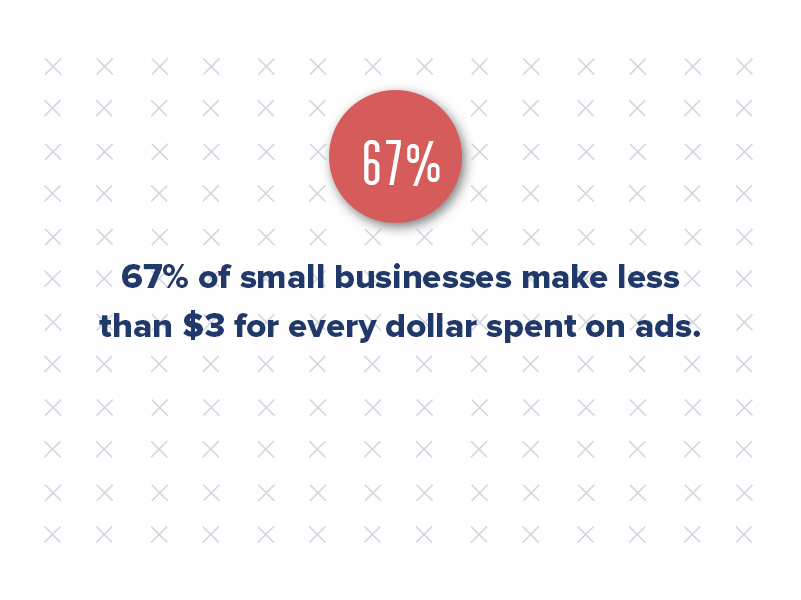
Paid Media Still Works
While content marketing is powerful, paid advertising remains valuable. It’s cost-effective and has a proven track record of success.
However, the key is to be smart about your approach. 67% of small businesses make less than $3 for every dollar spent on ads. If your ad spending often yields diminishing returns, then it’s time to rethink your marketing approach.
Here’s where a comprehensive marketing strategy comes in. By understanding your target audience and creating engaging content for them, you can lay the groundwork for successful paid advertising campaigns.
Additionally, staying on top of the latest digital marketing trends, including content creation and influencer marketing, is crucial to maximize your ad spend.
New technologies like generative AI can help you optimize your paid media efforts. AI can automate repetitive tasks like ad creation and targeting, allowing you to focus on strategic decision-making. Additionally, AI can analyze vast amounts of data to identify the most effective ad placements and messaging for your target audience.
With a well-rounded multifamily marketing strategy and leveraging cutting-edge AI tools, you can significantly improve your return on ad spend and reach your target audience more effectively.
The AI Revolution
Artificial intelligence (AI) is shaking things up in marketing and advertising. Here are some ways AI is changing the game:
- Content Creation Powerhouse: AI can create high-quality content like product descriptions and social media posts, freeing marketers to focus on more significant ideas.
- Super-Personalized Marketing: AI can analyze vast amounts of data to understand customer preferences. This allows for hyper-personalized marketing campaigns, delivering the right message to the right person at the right time.
- Marketing on Autopilot: AI can automate repetitive tasks like managing campaigns and optimizing ads, freeing marketers to focus on creative strategies that drive higher conversion rates.
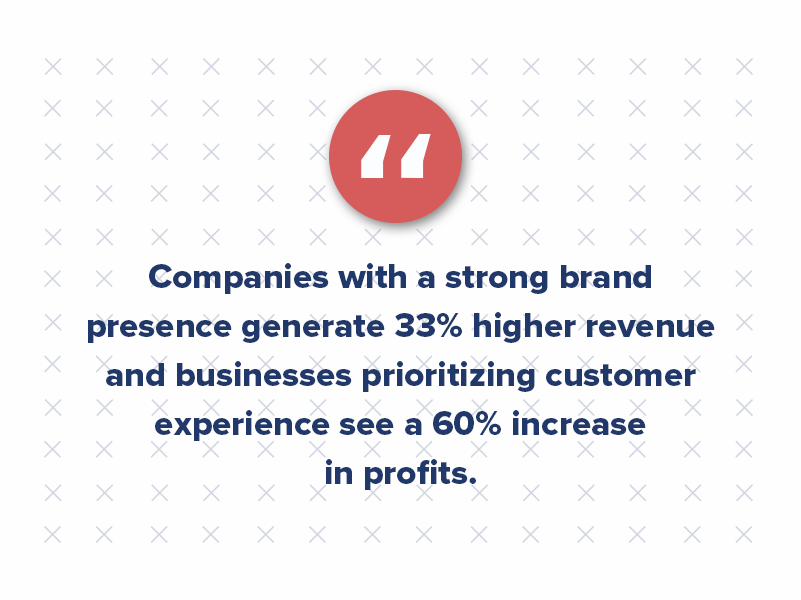
The Future Is Engaged and Data-Driven
When used strategically, marketing and advertising can be a game-changer for your business. Companies with a strong brand presence generate 33% higher revenue. Likewise, businesses prioritizing customer experience see a 60% increase in profits.
A well-executed multifamily marketing strategy that leverages AI and prioritizes audience engagement is no longer a luxury — it’s a necessity for survival and growth.
How to Utilize Google Business Profile to Weather the Storm
The multifamily market is on the brink of a challenging journey through the rocky terrain of the 2024 economy. While the road ahead may seem daunting, there’s a glimmer of hope on the horizon — 2025 promises a bounce-back that could breathe new life into the industry.
Whether you’re an apartment owner, a real estate investor, or a vendor in the multifamily market, safeguarding your digital image can be the key to surviving and thriving in the multifamily landscape until 2025.
Why Online Reputation Management Matters
Your online presence is often the first impression potential tenants, partners, and investors have of your multifamily business. With economic uncertainty looming, this initial impression can make or break crucial relationships. A tarnished online reputation may deter prospects and hinder growth, while a positive one can attract opportunities even in challenging times.
Economic instability can also breed doubt and skepticism. In such times, trust becomes a valuable currency. A well-managed online reputation builds trust by showcasing your commitment to transparency, communication, and customer satisfaction. It assures stakeholders that your multifamily business is resilient, trustworthy, and capable of weathering the storm.
Existing residents and partners are your foundation during economic turbulence. They rely on your ability to provide stability and value. A strong online reputation fosters loyalty and trust among your current stakeholders, reducing turnover and ensuring a more secure revenue stream. It can also differentiate you from rivals who may neglect their online reputation. It demonstrates your dedication to excellence and willingness to go the extra mile, making you the preferred choice for tenants, partners, and investors.
Not to mention, your online reputation is also pivotal in multifamily marketing efforts. Positive reviews, testimonials, and a well-optimized Google Business Profile can be powerful marketing assets, helping you attract new tenants and partners despite the economic challenges.
What’s Contributing to an Unpredictable 2024?
2024 has ushered in a period of unprecedented challenges. Various economic factors have dramatically reshaped the landscape, and navigating these uncharted waters requires a clear understanding of the forces at play. So, what’s contributing to the instability in 2024? And how can you “survive until ‘25?”
1. Economic Uncertainty
The global economic landscape in 2024 has been marked by uncertainty. Factors such as inflation, fluctuating interest rates, and geopolitical tensions have created an atmosphere of unpredictability. As a multifamily professional, it’s crucial to acknowledge this uncertainty and adapt your strategies accordingly.
2. Tenant Financial Strain
Many residents are grappling with financial challenges this year, affecting their ability to pay rent consistently. Eviction moratoriums and rental assistance programs have added complexity to the situation. To address tenant financial strain, offer flexible payment solutions that accommodate their circumstances. This can include payment plans, deferred rent options, and clear communication about available resources and support.
3. Supply Chain Disruptions
Supply chain disruptions have rippled across industries, impacting construction timelines and maintenance efforts. Property development and maintenance delays can affect your multifamily business’s bottom line. Anticipate supply chain disruptions and plan for contingencies. Maintain open communication with contractors and suppliers to address potential delays promptly. Prioritize essential maintenance and renovation projects to ensure resident satisfaction.
4. Market Volatility
The stock market and investment markets have exhibited heightened volatility in 2024. This can influence real estate investment decisions and funding availability.
5. Regulatory Changes
Legislative changes and government policies, including rent control laws and taxation, can impact the multifamily market. Stay informed about local and federal regulations that affect the multifamily industry. Adapt your strategies and business model to align with changing legal requirements.
6. Technological Advancements
Technology continues to reshape the multifamily market. Advancements in property management software, smart home technology, and virtual tours have become essential for staying competitive. Embrace technological advancements to streamline property management and enhance tenant experiences. Invest in user-friendly property management software and explore innovative, cost-effective solutions.
How to Use Google Business Profile to Weather the Storm
Your Google Business Profile can be the guiding light that leads you through the multifamily market’s uncertainties. Your Google Business Profile is crucial for attracting residents and partners and achieving multifamily marketing success. In fact, 56% of user interactions with Google Business listings result in visits to the company’s website, and a business gets noticed in more than 1,000 monthly searches through this platform.
Here is how to utilize your profile to manage your online reputation effectively:
1. Optimize for Accuracy and Appeal
Your Google Business Profile often serves as potential residents’ and partners’ first interaction with your multifamily business. A well-optimized profile creates a positive first impression, essential in an era where online research is prevalent. Ensure that all information on your Google Business Profile is accurate and up-to-date. Include high-quality images of your building, services or amenities, and company details. Craft compelling descriptions that highlight the unique features and benefits of your business.
2. Keyword Optimization
In a highly competitive multifamily market, local visibility is crucial. Optimizing your Google Business Profile enhances your chances of appearing in local search results when individuals are looking for apartments or related services in your area. Utilize relevant keywords in your profile description and posts. This will improve your profile’s search engine rankings, making it more likely to appear in local search results.
3. Encourage Positive Reviews
Customer reviews and ratings on your profile can significantly impact your reputation and influence the decisions of potential customers and partners. Actively encourage satisfied customers and partners to leave positive reviews on your profile. Respond promptly and professionally to all positive or negative reviews, demonstrating your commitment to satisfaction and resolving issues.
4. Utilize Messaging and Appointment Booking
Your Google Business Profile offers convenient communication channels. Streamlined communication can be a competitive advantage, especially during these uncertain times. Enable messaging on your profile to facilitate quick inquiries from potential customers. Additionally, utilize appointment booking features to make it easy for prospects to schedule tours or consultations with your team.
5. Monitoring and Analytics
Google provides valuable insights into how users interact with your profile, including the number of clicks, calls, and direction requests. Regularly monitor the analytics of your profile to assess its performance. Use these insights to make data-driven decisions and continually improve your profile’s effectiveness in attracting tenants and partners.
6. Multifamily Marketing Synergy
Your profile should align seamlessly with your multifamily marketing efforts. It serves as an extension of your brand and marketing strategy. Ensure that the branding and messaging on your profile align with your broader multifamily marketing strategy. Consistency across all platforms enhances your brand’s credibility and recognition.
Preparation for 2025
Surviving until 2025 in the multifamily market may seem arduous, but it’s brimming with potential. While the current state of the multifamily market may be uncertain, focusing on online reputation management positions you for success in 2025 and beyond.
Managing your online reputation isn’t just a choice; it’s necessary during this transformative period. The path may be challenging, but with effective reputation management, you can navigate it confidently and emerge stronger on the other side.

The True Value of a Qualified Lead in Multifamily Marketing
For commercial real estate marketing professionals, adapting to the rapid shift toward digital methods is both challenging and essential. Traditional property marketing techniques, honed over decades, are familiar to many. Yet, the evolution of the commercial real estate market trends points unmistakably toward the burgeoning significance of online platforms and digital outreach.
Navigating this digital realm can often feel like venturing into uncharted territory. While old marketing methods are quickly embraced due to years of experience, commercial real estate digital marketing strategies often face skepticism. These modern strategies’ tangible benefits and efficiencies, such as lower implementation costs, are frequently overshadowed by doubts and resistance. This evolving scenario poses a unique problem for multifamily marketing managers attempting to position themselves at the forefront of real estate marketing strategy innovation.
So, how can one effectively convey the value of a lead, especially a qualified apartment lead, within this digital framework? The challenge might seem daunting, but understanding and leveraging the potential of digital tools is crucial for marketers determined to stay ahead in the game.
The Quantitative: Doing the Math
When navigating the intricacies of multifamily marketing, one of the foremost concerns that real estate agents and marketers face is justifying the costs to their executive team. While these teams frequently zoom in on ROI as the primary measure of success, a holistic view of marketing efforts suggests this isn’t the only metric that matters.
Why? Understanding the ROI in the world of real estate marketing requires a deep dive into the needs and behaviors of the target audience. Further complicating matters, there are numerous ways to calculate marketing ROI, each offering unique insights tailored to different real estate marketing ideas.
For those deeply entrenched in commercial real estate marketing, the prevalent method to gauge ROI is the “cost per lead.” But here’s where many face a problem: Does this metric encompass all leads, or does it specifically address qualified leads? If you’re using a real estate website to generate leads, search engines can often bring a mix of visitors, not all of whom are part of your target market. When examining the broad spectrum of all leads, the cost-per-unqualified lead will invariably seem more economical.
However, a closer look reveals the nuances. Many of these leads, especially those seeking properties like office space or virtual tours of property listings, might not align with what’s being offered, making them a less-than-ideal fit or not ready to purchase.
This initial cost, often deceivingly attractive, fails to factor in the lead’s position in the buyer’s journey, whether they’re just becoming aware or on the brink of making a decision. Consequently, this metric overlooks essential expenses, such as the costs of nurturing these leads through tailored marketing strategies or the eventual sales pitch.
Cost Per Lead
However, the standard “cost-per-lead” is likely a sufficient metric for companies playing the lead generation game. That formula is simple enough. You take the marketing spend and then divide it by the number of leads.
Marketing Spend / Total New Leads = Cost Per Lead (CPL)
But depending on your end goals, this may not be the number your executive team wants. They may be more interested in your cost per marketing qualified lead (MQL) — or a lead ready to go to sales. This number is not too complicated, either.
Divide the marketing tactic spend by the number of MQLs you got through that method. That’s your MQL cost. Not tracking MQLs? You will not be able to backtrack your MQLs, but we have some tips on setting up your lead qualification for the future.
Marketing Tactic Spend / Total New MQLs = Cost Per MQL
This metric will likely garner better interest than a standard cost per lead, but executives will likely want more. This is where “return on spend” comes in, which shows the actual value of your efforts by relaying how those efforts impacted your bottom line. In other words, it’s the amount you earn in the business compared to your spend. This number is much harder to get; however, it can be a significant selling point in convincing your boss of the value of your efforts.
First, you must know the lifetime value of your customers.
Lifetime Value
Calculating the lifetime value of your customer is simple enough, but your formula will vary based on the nature of your product or service. If you are a subscription-based service, you will want to know the average monthly spend of a customer. If you offer a one-time product or service, you must consider typical upsells, which can increase your averages. There’s no simple formula, but once you go through this process with your sales data, you should be able to come up with a reasonable average.
The next step is to look at conversion rates of qualified leads — namely, how many marketing-qualified leads become sales-qualified leads and the average close rate of a sales-qualified lead. Got that number? You are going to use it to calculate the MQL value.
MQL Value
The MQL value is vital because it benchmarks how much an MQL should be worth. It’s also key in calculating return on spend. With this number and your cost per MQL, you can calculate the return on any marketing spend — email campaign, social media ad, etc. It’s as simple as dividing the MQL value by the cost per MQL
MQL Value / Cost Per MQL = Return on Spend
This number can help commercial real estate marketers justify marketing endeavors. However, it’s not the only one you should look at. A better snapshot number could be “return on campaign,” which looks at your endeavors. Much like a standard ROI number, return on campaign operates on similar calculations, but while looking at the components of your marketing campaign over the set time it ran.
Traditional ROI computations look like this:
(Sales Growth – Marketing Cost) / Marketing Cost = Return on Investment
However, with campaigns in mind, there are often different or additional costs involved, and not all sales may result from the campaign. If you run a single campaign at a time, you could modify this calculation to reflect any natural growth you see on average.
(Sales Growth – Marketing Cost) / Marketing Cost – Avg. Organic Growth = Return on Campaign
This gives you a more standard return that executives are used to interacting with. However, if you run multiple campaigns simultaneously, you can calculate individual returns on each campaign by taking a more roundabout approach. This involves looking at customers acquired from the campaign and multiplying the average sales and margin. Then, you subtract your campaign budget. This gives a more accurate number as to the contributory effect of each campaign.
(# Campaign Customers * Avg. Sale Amt. * Avg. Margin) – Campaign Budget = Return on Campaign
These numbers may not be simple to master or even remember; however, they’re a great way of proving marketing’s worth to your executive team.
The Qualitative: Remembering the Immeasurable
People like numbers because they are easily digestible. A number tells a simple story. But a number can also be manipulated. And a number doesn’t always tell the full story. Often, having numbers is not enough — you also need a narrative. This is where “qualitative” value comes in.
A great return on spend will undoubtedly do well to impress your C-suite with your marketing efforts. But what if you told them you also could decrease your sales cycle by a few months? That would garner strong attention as well. This is just one example of qualitative value when discussing your marketing endeavors — and the unexpected benefits of running a solid digital marketing campaign.
Digital Marketing Is Iterative
Another positive qualitative value? Certain parts of a digital marketing strategy are iterative. Commercial real estate marketers may need to develop new content or web pages for campaigns, but much of the groundwork is already done. And most of it will not need to be done again. Or at least not soon.
Buyer personas and the associated buyer’s journey may need adjustments over time. However, none of that will compare to the initial costs of developing these items. This means that over time, your ROI will likely decrease, as the costs of these components can technically be spread across each campaign. It’s hard to calculate this as a number, but it certainly goes into ascribing value to the lead process.
Qualified Leads for Commercial Real Estate Marketers
The biggest qualitative value that inbound offers is qualified leads. Traditional marketing methods gather unqualified leads sent to sales — or worse, cold-calling. On the other hand, inbound marketing puts a process in place that qualifies leads naturally through offers and nurture campaigns.
This systematically improves the marketing process, allowing leads to qualify themselves as you push out more content. In turn, you shorten the time and resources the sales team spends qualifying leads. This means commercial real estate marketers’ qualified leads from the inbound process cost less than the qualified leads you get through another method.
The Bottom Line of Lead Value
So, what does this mean for commercial real estate marketers?
Pulling it all together, a digital marketing program like multifamily inbound marketing allows you to ascribe worth to the apartment leads you gather easily. Multifamily inbound marketing also enables you to prove that the costs and returns associated with those leads are of greater value to your business than leads garnered from more traditional methods.
In coupling calculations like return on spend, you can prove your leads’ quantitative and qualitative value. As we noted previously, inbound marketing offers improved cost-per-lead values and lower implementation costs. But it’s one thing to know it and another thing to prove it to your executive team.
Navigating the Balancing Act Between Sales and Marketing Teams
A synergy between sales and marketing teams lies at the heart of a successful multifamily marketing plan. In the commercial real estate sector, marketing centers on intelligence and data gathering, while sales focus on execution; yet, their roles are deeply intertwined.
The marketing team dives deep into rent data, conducts market research, and absorbs the multifamily industry’s broad scope. Based on this data, they identify potential leads and then pass the baton to sales. The sales team then educates the public, forges relationships, and drives new business acquisitions while gathering invaluable on-the-ground insights.
But here’s the crux: even though their day-to-day functions differ, one cannot thrive without the other.
Balancing the Equation in Multifamily Marketing and Sales
While sales and marketing may occasionally be at odds, with different perspectives and expectations from each other, their success hinges on mutual reliance.
Marketing teams need sales insights. Sales teams often offer a ground-zero perspective, giving marketing a clear picture of potential customers’ reactions and feedback. Conversely, sales teams heavily depend on marketing for aggregated data, market trends, and overviews, ensuring they align with the broader business strategy.
But how do you ensure this balance is maintained?
Bridging the Divide for Effective Multifamily Marketing Plans
To maximize the potential of a multifamily marketing plan, unity between sales and marketing is non-negotiable. Both teams should have an appreciation for each other’s roles and challenges.
Imagine if professionals had to spend some time in the opposite camp before rising to senior roles like Sales VP or Marketing VP. Such cross-functional experiences can foster mutual respect, better understanding, and more collaborative strategies.
Promote a culture where the company views sales and marketing teams as equal pillars supporting its growth. Both should operate at the same hierarchical level, emphasizing collaboration over competition. The old “us vs. them” mentality? It’s time for that to go.
Boosting Customer Engagement Through Cohesion
What is the tangible outcome of a harmonized sales and marketing approach in multifamily operations? High-quality leads. Lead quality significantly uplifts when both teams are in sync, especially in an inbound marketing framework.
Inbound marketing, peppered with rich content like whitepapers, blogs, and social media, serves as a tool to educate potential clients. With this approach, prospects are well-informed before the sales team engages them. They know the services offered, have weighed their options, and when they reach out, they ask intelligent, informed questions, streamlining the conversion process.
Remember, an effective inbound multifamily marketing plan thrives on a united front between sales and marketing.
Sales and marketing are not just departments but the twin engines propelling a multifamily business forward. Multifamily marketing plans can soar to new heights by fostering a symbiotic relationship, driving leads, conversions, and business growth. The question isn’t whether they should coexist but how best to ensure they flourish together.
Proven Multifamily Social Media Marketing Strategies to Increase Engagement
Social media’s influence is profound and pervasive, with over 4 billion global users engaging on multiple platforms monthly, dedicating more than two hours daily to these platforms.
For multifamily property owners, this translates to a vast, often cost-effective marketing landscape teeming with potential. Creating a social media strategy can amplify a property’s digital footprint, heighten engagement, and elevate multifamily brand recognition.
Are you aiming for heightened visibility or superior leads? Here’s the inside scoop, including ways to maximize your reach with multifamily social media marketing:
1. Choose the right multifamily social media marketing platforms.
Determining the optimal social platforms for your needs is crucial. While there’s a plethora to pick from — from Facebook, Instagram, and TikTok to Snapchat and X (formerly Twitter) — it’s essential to discern which is most frequented by your target demographic.
Both Facebook and Instagram reign supreme in terms of performance, yet TikTok is swiftly gaining traction, especially if you’re targeting the Gen Z segment.
Not to be overlooked, TikTok also holds appeal for millennials. Comscore data reveals that close to 30% of TikTok enthusiasts are aged between 20-29, and another 16.4% fall within the 30-39 age bracket.
Your overarching multifamily marketing strategy should guide your platform choices. For instance, if your focus is on running tailored social advertisements, Facebook stands out. Conversely, if you aim to diversify your property’s follower base, Instagram boasts features tailored for audience expansion.
While businesses often encounter a pay-to-play model on Facebook, it’s an excellent platform for promoting posts and rolling out social ads. Meanwhile, Instagram offers tools designed to introduce your property to new eyes and amplify brand visibility.
LinkedIn also stands out as a prime channel for multifamily vendors. Given its professional and formal tone, LinkedIn reaches the precise audience — property managers, real estate professionals, and potential partners. Before diving into other niche platforms, it’s strategic to tap into the robust network that your target audience already frequents.
2. Engage with your audience; don’t just promote.
When deciding what content to post on your channels, always consider what your audience would find interesting. Social media is not a microphone for self-promotion but a chance to connect with your audience.
While it’s tempting to showcase your products or services constantly, it’s crucial to prioritize engagement over sheer promotion. Your content should resonate with property managers, residents, and potential partners. Balance your feed with valuable original content, like how-to guides or industry insights, and share valuable articles or insights. Always prioritize your audience’s interests and subtly integrate how your offerings can solve their needs. Think about your audience first and piece in how you fit into the conversation second.
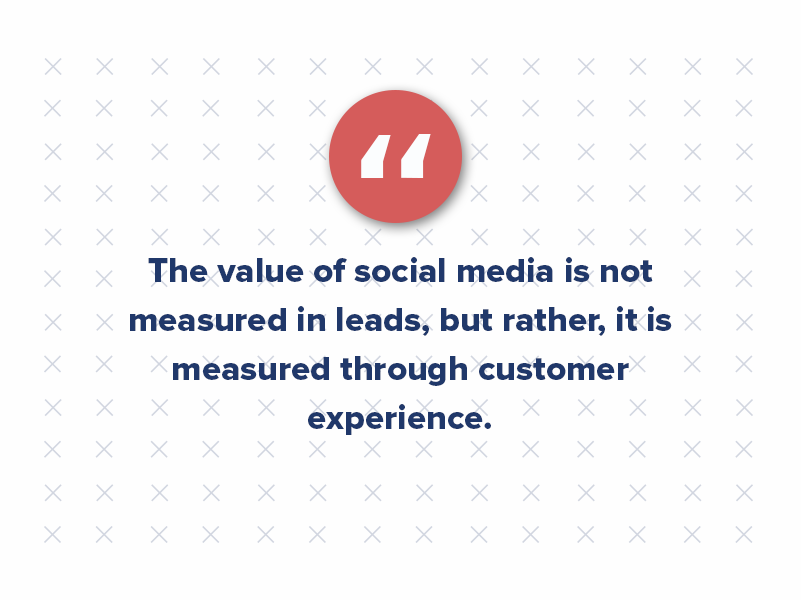
3. Narrate your multifamily brand journey.
Every multifamily vendor boasts a distinct narrative — encompassing its genesis, evolution, and the principles it champions. Embarking on a journey to create a social media platform dedicated to such storytelling can be invaluable. To maximize your social media presence, select the most suitable social media channels tailored for your target audience.
When crafting social media posts, consider profiling elated property managers who have reaped the rewards of your services. Such testimonials act as authentic endorsements, solidifying the trust of social media users in your offerings. Additionally, providing a sneak peek behind the curtains — showcasing the day-to-day operations of your business — can foster genuine connections. As property owners and small businesses scroll through their preferred social network, such posts can resonate deeply, increasing brand awareness.
Furthermore, celebrate every milestone, whether it’s the 100th property you’ve worked with or the 10th year of your operation. Sharing these achievements on various platforms can significantly boost traffic to your website.
4. Share and promote your blogs on social.
For social media managers at the helm, it’s essential to discern the content that aligns with the essence of the multifamily property. This ensures that the marketing campaigns rolled out resonate with the audience in real-time.
Incorporating blog posts related to the multifamily industry, insights, or even tips for property managers can become an integral part of your multifamily social media marketing plan. It provides value to your audience, and such posts can generate leads.
Lastly, actively monitor the leads generated from these endeavors. Track and measure the effectiveness of each campaign, adjusting strategies accordingly. This proactive approach ensures your brand remains agile and attuned to the ever-evolving digital landscape.
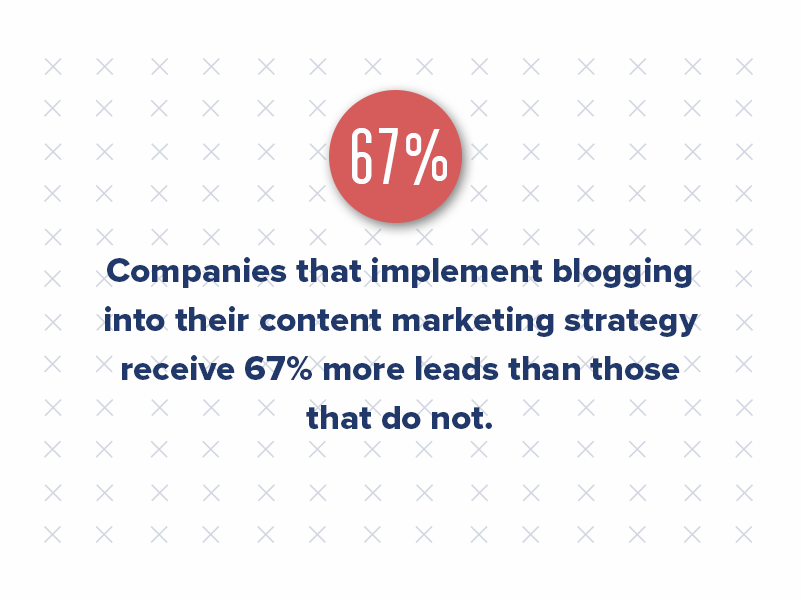
5. Focus on the imagery.
In today’s digital landscape, most leading social platforms place a premium on visuals. The logic is simple: the more visually captivating a post, the more shares it garners, subsequently reaching a broader audience.
With this in mind, it’s essential to prioritize high-quality imagery. Opt for striking and locally relevant photos that narrate your brand’s narrative and resonate with your desired clientele. Remember, the foundation of exceptional content is exceptional photography.
6. Diversify your content and use more videos.
While photography is still essential, you shouldn’t overlook the power of dynamic video content. Engaging and high-quality videos have become pivotal in modern digital marketing. According to a Wyzowl study, 84% of marketers leveraging video content reported lead generation, while 78% credit their sales growth to it.
Visual aids make your feed more enticing and improve information retention. A monotonous feed can lead to reduced engagement. Intersperse your content with vibrant images, videos, infographics, and other visual content.
Brands should particularly focus on crafting videos for Instagram Stories, Instagram Reels, and TikTok. The usage of Instagram stories by major brands has grown substantially, doubling in just the past year. Instagram Reels have also experienced significant traction.
An added advantage? Reels can seamlessly be adapted and shared on TikTok. This platform became the first non-Facebook app to achieve 3 billion global downloads, making it one of the most sought-after social platforms currently.
7. Expand your reach strategically.
Social media can also be an excellent outlet for paid advertising. Surveys show that nearly half of all social users say they’ve bought something after seeing it advertised on social.
Once you’ve established a consistent and engaging content strategy, explore the advertising features of platforms like Facebook and LinkedIn. These platforms offer laser-focused targeting, ensuring your content reaches the right eyes. You can target specific locations, demographics, and even users with particular interests, backgrounds, and career fields on platforms like Facebook and Instagram. For instance, a post detailing the benefits of a specific service for property managers can be targeted precisely at that demographic.
Incorporating these strategies can transform social media from just another marketing channel to a dynamic platform that fosters connections, enhances brand visibility, and drives tangible results for multifamily vendors.
Paid advertising provides an opportunity to market to your target audience directly. It’s important to test, test, and test again — on every element of your ads.
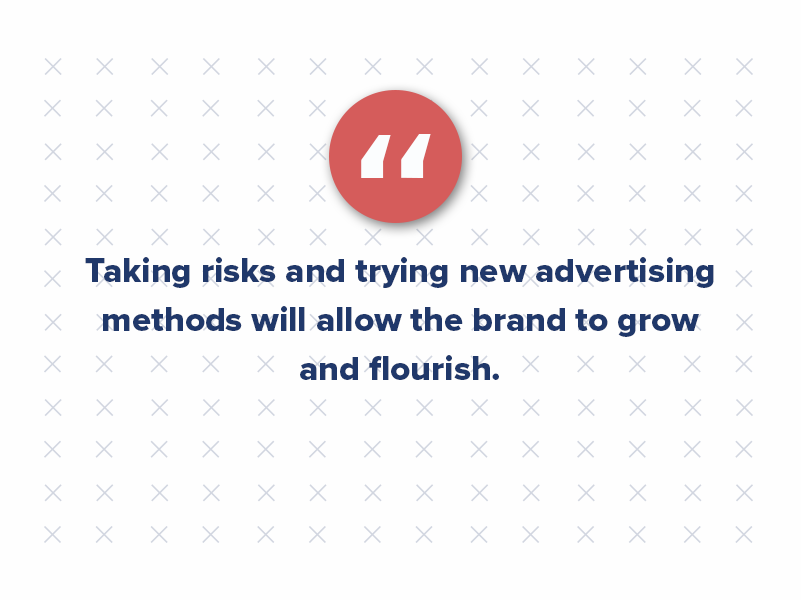
8. Tap into user-generated content.
Producing all your content in-house isn’t a necessity. Often, content created by your users or followers, known as user-generated content (UGC), can be as impactful as the content you create, if not more. UGC can encompass anything from posts and photos that mention your property to online reviews and other social content shared by individuals beyond your team.
Given a choice between official brand messages and genuine customer reviews, consumers consistently lean toward the latter’s authenticity. The reality is that many consumers place more trust in fellow consumers than in brands themselves. Thus, it’s a strategic move to integrate UGC into your promotional strategy.
Another avenue to explore is influencer marketing. This approach involves partnering with well-established social media figures to advocate for your brand. It’s crucial, however, to select influencers whose followers resonate with your target audience and be prepared for the associated costs.
Begin Your Multifamily Social Media Marketing Journey
Ultimately, multiple paths lead to success in multifamily social media marketing. Defining your objectives, deeply understanding your desired audience, and springing into action are essential.
Recognizing your core audience and discerning what appeals to them on social platforms is fundamental to a campaign’s triumph. Once you’ve done that, charting a strategy concerning content type, its regularity, and its origins becomes paramount. Ultimately, analyzing outcomes and making necessary tweaks is the finishing touch to a winning strategy.


